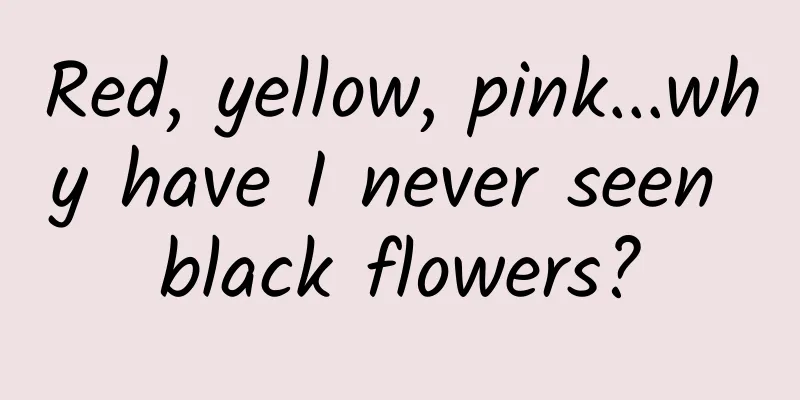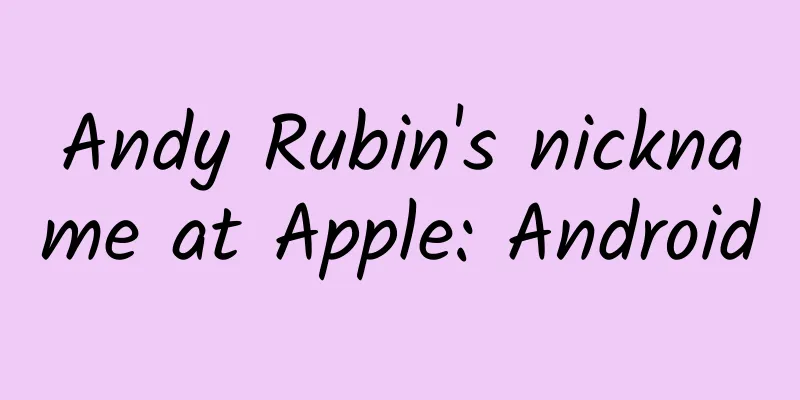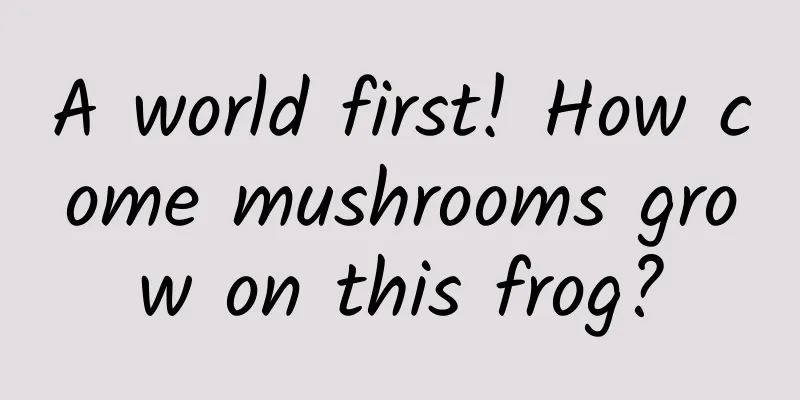Red, yellow, pink...why have I never seen black flowers?

|
When we go to the flower market, we always see some black flowers. These black flowers may not be attractive compared with red and yellow flowers, but when we get closer, we find that the prices are very high. This is because these black flowers are almost all artificially cultivated varieties and are not common in nature , so the price will naturally be higher. There are various flowers in the flower market, including some black flowers. Copyright image, no permission to reprint If you think about it carefully, you might realize that we almost never see "natural" black flowers in nature... Why is that? Why are there so few black flowers in nature? Two hypotheses have been proposed regarding this issue. 01 Hypothesis 1: Flowers are also afraid of "sunburn" Have you ever noticed that when we walk under the scorching sun wearing black clothes, we always feel hotter than when we wear white clothes? This is because black objects absorb almost all natural light (such as ultraviolet light, visible light, and infrared light), and the absorbed infrared light tends to increase the temperature of black objects, making them hotter. Those who hold the first hypothesis believe that the reason why there are few black flowers in nature is that black flowers also absorb almost all the color light from the sun, causing themselves to heat up rapidly, then get burned, and then die . Let's call this hypothesis the "burning" hypothesis. The "burn" hypothesis explains the "black flower" problem from a physics perspective. Although it makes some sense, some people have raised doubts. Skeptics believe that if black flowers are really scarce in nature because they will be "burned", then why are black flowers still rarely seen in the shade of the forest where sunlight is scarce? Without the threat of sunlight, there should be a large number of black flowers in the shade of the forest. The fact is, apart from some purple to black spathes in the Araceae family, there are no other typical black flowers in the woodlands. The spathe of Japanese skunk cabbage in the Araceae family, Image source: Wikipedia In addition, with the continuous development of gardening, gardening enthusiasts have cultivated a lot of black flowers, such as those "noble" black flowers seen when visiting flower shops. They are also cultivated in the sun, but they are not burned by the sun. Black tulip. Copyright image, no permission to reprint. This shows that the "burn" hypothesis is not very comprehensive. Next, let's look at the second hypothesis. 02 Hypothesis 2: Flowers’ “good friends” The second hypothesis takes a different approach from the first one, as its supporters view the “black flowers” issue from the perspective of species evolution . Since plants cannot move freely, they need to use flowers to attract various animals to help them pollinate, such as bees. The second hypothesis is that bees may be the answer to the question of "why there are no black flowers in nature", which we can call the "bee" hypothesis. Flowers that attract bees. Copyright image, no permission to reprint As the backbone of animal pollination, bees have a deep connection with flowers. If we trace back to 130 million years ago, we will find that it was the time when flowering plants began to emerge on Earth, and it was also the period when bees were evolving . For 130 million years, there was no large accumulation of black flowers in nature, which may be inseparable from the selection of flowers by bees as pollinators. For organisms in nature, their evolution is completely random. Organisms may evolve into various shapes, colors and structures. However, only through natural selection can organisms that adapt to the natural environment survive. The preferences of important pollinators, bees, are a kind of selection pressure for plants. So how do bees choose flowers? Why do they ignore black? Is it because they see a more colorful world? Is the world that bees see so colorful? This is a copyrighted image and is not authorized for reproduction. As early as 1914, Austrian animal behaviorist Karl von Frisch found the answer to the question of whether bees can see a colorful world through experiments: bees have color vision , and the world in their eyes is indeed colorful. Frisch's experimental operation is not complicated, and the steps are as follows: 1. Frisch first covered the blue paper with honey to let the bees "know" that the blue paper can provide honey, thus establishing a connection between the bees and the blue paper, that is, training the bees; 2. Frisch then placed the blue paper without honey among many gray papers, all of which had different shades of gray; 3. Then, the trained bees are placed on these pieces of paper, allowed to move freely and observed. There are two possible results of the observation: a. If bees do not have color vision, they will not be able to distinguish between blue and gray papers with a similar grayscale to blue, so the number of bees landing on the blue paper and the gray paper with the same grayscale as the blue paper should be the same; b. If bees have color vision, they will only land on blue paper. 4. The results were very obvious. The trained bees only landed on the blue paper, proving that bees have color vision. Later, scholars imitated Frisch's experiment and saw bees landing on blue paper, as well as the bees' color vision range obtained from the experiment. Image source: Reference [1] Later, some scholars tested the vision of bees through electrophysiological technology and found that the wavelength of visible light for bees ranges from 300 nanometers to 650 nanometers. They also discovered that there are three types of photoreceptor cells in the compound eyes of bees , which are most sensitive to three wavelengths of light: ultraviolet light with a wavelength of 335 nanometers, blue light with a wavelength of 435 nanometers, and green light with a wavelength of 540 nanometers. Scholars generally believe that bees are attracted to flowers mainly because they are attracted to ultraviolet light and can see the ultraviolet light reflected by flowers . When introducing the first hypothesis, we learned that black absorbs almost all light, including ultraviolet light, visible light, and infrared light. In other words, black is extremely inefficient in reflecting these rays, so black flowers are not so attractive to bees. Even if black flowers appeared in the past 130 million years, they would be "ignored" by bees, and they could not be expected to help them pollinate. But in fact, in addition to ultraviolet rays, bees are also attracted by the smell of flowers, so we cannot assert only from the perspective of color that bees will not pollinate black flowers at all. 03 Who is right and who is wrong Although both hypotheses have their own merits, they both have some incomplete considerations. More and deeper research is needed on the question of "why there are no black flowers in nature". Although the hypothesis is not complete, proposing a hypothesis can at least allow us to think about the problems we encounter from more perspectives. Finally, when discussing the “burn” hypothesis, we mentioned one of the few flowers in nature that are close to black—the purple to black spathes of the Araceae family in the shady woods. Here’s a little thought for everyone: guess which insects are responsible for pollination? A small hint: their smell doesn’t seem to be very pleasant [2]. Arum purpureospathum, a species of Araceae, on the Greek island of Crete. Photo credit: Nicholas Turland References: [1] Charles Henry Turner and the cognitive behavior of bees. Martin GIURFA, Anaclara Giurfa de BRITO, Tiziana Giurfa de BRITO, Maria Gabriela de BRITO SANCHEZ [2] Liu Dexin, Wang Qingfeng, Yang Chunfeng (2022) Floral diversity and pollination strategies of Araceae plants. Biodiversity Science, 30, 21426. Author:Taoryl Review | Wang Kang, Director of the North Science Museum of the National Botanical Garden, Professor-level Senior Engineer; Yao Yuan, Associate Researcher, Bee Research Institute, Chinese Academy of Agricultural Sciences The cover image and the images in this article are from the copyright library Reproduction of image content is not authorized |
<<: In Madagascar, a country full of amazing species, the giant lemur calmly looked at me
>>: Rumors debunked! Power savers really can’t save electricity bills, don’t be fooled again!
Recommend
How to apply star-chasing publicity channels to brand marketing?
The channels used by star-chasing fans to promote...
Chukong Technology officially releases "One-stop solution for game development"
On February 2, 2015, Chukong Technology officiall...
Creating a Line Chart with SwiftUI Charts in iOS 16
Preface Apple introduced SwiftUI Charts at WWWDC ...
Is it enough to infect 100 million Apple users? XcodeGhost author wants to infect all phones
[[150342]] On the second day when the media paid ...
How to conduct data analysis in SEM promotion?
When an account accumulates a certain amount of d...
Summize|Three young talents, 24 hours, it’s that easy to top the App Store charts!
If you looked at the App Store's top paid app...
Bird nests are not for sleeping? I was surprised after reading this!
When most people think of a "bird nest,"...
Why are dolphins the nemesis of sharks?
You may have heard that dolphins are sharks' ...
5 ways to create copy when you have no inspiration
Being a copywriter is like being a baker in a cak...
Operations are not based on intuition, but are driven by data.
Many college students who are about to graduate w...
Can the combination of "salt" and "mirror" generate electricity? So easy! 24 hours a day!
Review expert: Zhu Guangsi, member of Beijing Sci...
Product analysis of Kuaishou, Douyin and Weishi!
The article conducts a comparative analysis of th...
Google's official MVP sample code reading notes
Unraveling the project structure According to int...
How do smart home appliances eliminate the "gap" between products and users?
To this day, there is still no clear definition o...
Do you think the "cracking" sound in the joints comes from the bones? | Illustrated Science
What is the "cracking" sound coming fro...









